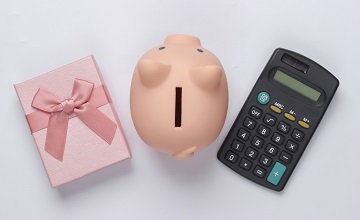4 fool-proof ways to keep on top of your credit cards
Credit cards certainly make life easier – they are simple to use, accepted almost everywhere, and help you to buy what you want, when you want, particularly online. So much…

Credit cards certainly make life easier – they are simple to use, accepted almost everywhere, and help you to buy what you want, when you want, particularly online. So much…

As the end of financial year fast approaches, there is still time to consider the strategies available to you this June 30 to build your wealth, some of which are…

If there is anything we have learnt in the last two years, it is just how quickly things can change. Between devastating bushfires, floods, and a life-altering pandemic (just to…

Robust domestic economic growth Australia is rebounding from the pandemic, with domestic economic growth forecast to reach 3.5 per cent this financial year. Some analysts predict it might be even…

The Federal Government has delivered a big-spending 2022 budget, taking immediate steps to reduce cost of living pressures for working Australians while implementing a range of massive infrastructure and defence…

It is commonly assumed that seeking financial advice is for the wealthy, and it only helps the rich become richer, yet financial advice can prove useful to anyone who wishes…

If the ins and outs of superannuation leave you confused, the answers to these frequently asked questions will help you understand the basics. How much do I need to retire?…

Talk about hammering the plastic. In November 2021, Australia’s 13.2 million credit card accounts were used to make over 292 million transactions with a total value of $31.9 billion. Card…

There are three key components to a successful savings strategy. The first is some surplus cash; an amount of money you can regularly set aside in your quest to become…

If you are in your thirties, chances are life revolves around children and a mortgage. As much as we love our kids, the fact is they cost quite a lot….

Coronavirus Victoria and New South Wales saw their economies roar back to life as they emerged from lockdown just in time for a new kid to arrive on the coronavirus…

Another year is over. Did you achieve everything you’d hoped? Are you better or worse off financially than you were this time last year? With a new year in front…

Despite frequent changes to its governing rules, superannuation remains, for most people, a tax-effective environment in which to save for retirement. Here’s a quick Q&A on the ‘what, why and…

Superannuation statements. Boring, right? But if, like many people, you toss your annual super statement in a drawer or hit delete, you could be depriving yourself of many thousands of…

Resilience is the ability to quickly recover from setbacks, and while setbacks can come in many forms most of them will have a financial component. So what can you do…

Concentration risk. No, it’s nothing to do with thinking too hard about something. In fact, it’s more likely to be a result of not paying enough attention. Concentration risk is…

COVID here to stay The third quarter of the calendar year brought with it the third and by far the biggest wave in COVID-19 infections. Largely restricted to NSW and…

Who decides what happens to your superannuation savings when you die? You may think that you do, but that isn’t always the case. The ultimate decision may be made by…

Research shows that Australians are underinsured which has led to the proliferation of television advertisements promoting personal insurance cover. Are these quick and easy plans suitable for your family? Research…

Did you have a savings account when you were young? It wasn’t uncommon and those old Passbook accounts funded many a first car. Now you’re a parent, are you thinking…

You’re young, expecting a satisfying future brimming with friends, family and a comfortable lifestyle. You’re a Next Generation Investor, likely aged between 18 and 25, and you’re starting to think…

Personal insurances are designed to provide protection from the financial consequences of death or disability. They therefore form an important part of most financial plans. Here, in brief, is how…

Employment surprise JobKeeper was a cornerstone of Australia’s response to the coronavirus pandemic. It provided millions of Australians with an ongoing income and kept thousands of businesses afloat, so when…

Prior to COVID, we were steadily moving towards a cashless world. Post 2020, even the most resilient of us has made the leap to tap-and-go payments sooner than we expected….
End of content
End of content